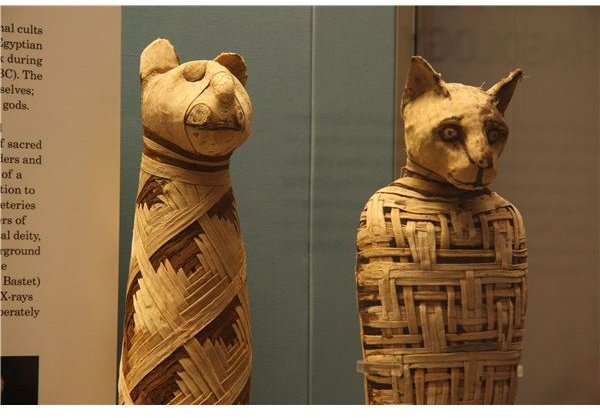A Fun Mummy Lesson Plan for Elementary or Middle Schoolers
We all know Halloween can be quite a treat for students. Candy, costumes and harmless pranks make it a very popular holiday with kids. Teachers can have fun with Halloween in the classroom as well. From studying spiders in Science to reading “The Legend of Sleepy Hollow” in Literature, Halloween provides an opportunity to develop fun lessons in every subject. For example, a unit on Ancient Egypt must include mummies and when better than Halloween to dig them up? Below is a lesson plan based on the book “Mummies Made In Egypt,” which explains the Ancient Egyptian method of mummification and depicts the gods’ importance to the process. While this book is written for younger readers (9-12 year olds), it provides enough detail to be appropriate for older children too.
Focus of lesson:
Lesson will introduce students to mummies, the mummification process developed by Ancient Egyptians, and their firm belief in an afterlife. A printable vocabulary list and blank “Mummification Steps” worksheet are included in this mummy lesson plan.
Lesson meets:
NCSS Thematic Standard: I Culture. Teacher Expectation — guide learners as they construct reasoned judgments about specific cultural responses to persistent human issues.
NSS-WH.5-12.2 Era 2: Early Civilizations and the Emergence of Pastoral Peoples, 4000-1000 BCE
1. Begin by asking if anyone can tell the class what a mummy is.
- Definition of Mummy — a naturally or chemically preserved body. The word mummy comes from the Arabic word for bitumen (defined in the downloadable vocabulary list below) which was used due to the black appearance of mummified bodies.
2. Discuss and explain the beginnings of mummification in Ancient Egypt.
-
During Ancient Egypt’s predynastic period, bodies were buried in shallow graves in the desert where decay was naturally prevented because of the heat and dry sand. The knowledge of these bodies probably led to the belief in an afterlife and the development of the mummification process.
-
Most of the bandaged mummies that have been found date from the New Kingdom when the embalming process was no longer solely the purview of royalty, and was available to anyone who could afford it.
3. Read through “Mummies Made In Egypt” as a class and discuss. Give students blank handouts to fill in the steps of mummification in their own words. Review steps — this is usually a fun and lively discussion!
Steps to Mummification: A Dirty Job But Someone Had To Do It
- The body was cut open to remove the organs. They did not remove the heart for it was thought to be the center of the soul.
- Inserted a long hook into the nostrils to remove brain.
- Body was washed with palm oil, filled with incense and perfumes, and stitched closed.
- Embalmers covered it with natron, a special salt, to dry up the fluid in the body tissues.
- After 70 days, the body was washed in the Nile and resins and oils were rubbed into the skin.
- The body was wrapped in strips of fine linen.
- The body was then placed in three nested coffins. All three were put in a sarcophagus, which was placed on a bier or coffin stand.
- A procession walked to the tomb. The priests were in front followed by the immediate family led by the queen who smeared dirt on her face and ripped her dress. Next came the mourners such as relatives and court officials. Lastly, servants followed carrying furniture, clothing, food, weapons, jewelry and other items that might be used by the dead.
- Priest performed final ceremony: “ You will live again, you revive always, you have become young again, you are young again and forever.”
- To nourish his spirit after death, special priests carried out rituals at the deceased’s mortuary, or funeral temple.
4. Review this list of vocabulary words and use the following questions, “Mummies Made in Egypt,” and students’ notes on the mummification process to encourage more discussion and understanding of mummies.

Discussion questions:
-
Do you think the Egyptians’ preoccupation with death was morbid or depressing for them? Do you think their obsession with the afterlife was a way of expressing a love of life?
-
Why do you think Egyptian tombs became more and more elaborate as time went on?
-
Why are we still fascinated with mummies and pyramids?
-
Can you think of any other cultures or civilizations that built pyramids?
-
Is Egypt the only place you can find mummies?
-
What animals did the Ancient Egyptians mummify?
-
Were these animals special to the Egyptians?
References
- Mummies Made in Egypt. Aliki, Harper Collins, 1985.
- Animal Mummies by Mario Snachez under CC by -SA 2.0
This post is part of the series: Ancient Egypt Lesson Plans
Introduce your students to the land of the Pharaohs, mummies, and pyramids.